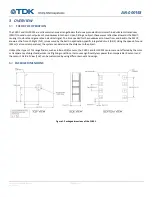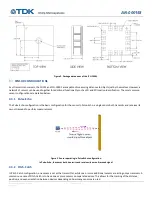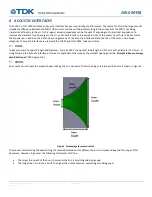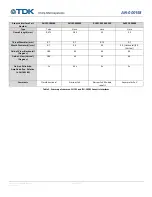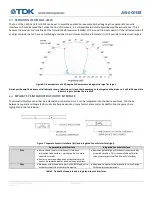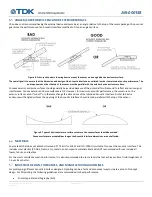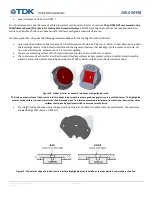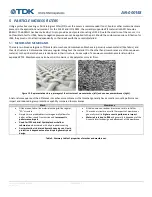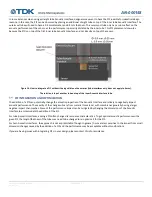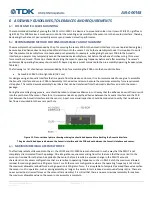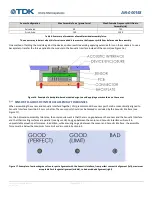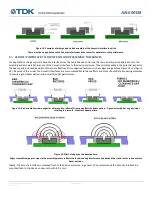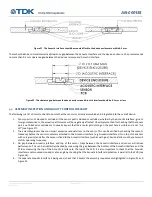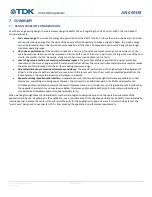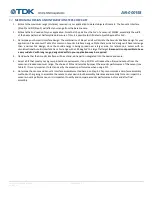
AN-000158
Document Number: AN-000158
Page 15 of 22
Revision: 1.2
In some instances when using a straight tube Acoustic Interface, designers may want to have the PIF invisible for industrial design
reasons. In this case, the PIF can be obscured by placing an additional straight tube on top of the inner tube Acoustic Interface. The
outermost tube will need to have a 0.9 mm diameter and 0.9 mm thickness. This outermost tube only has a minor effect on the
acoustic performance of the sensor, as the performance is primarily dictated by the inner tube. This PIF placement also works
because the PIF is on top of the first inner tube Acoustic Interface, and not directly on top of the sensor.
Figure 14. How to integrate a PIF without it being visible on the exterior (tube interfaces only, does not apply to horns).
The solution is to put another tube on top of the inner Acoustic Interface tube.
PIF INTEGRATION AND OPTIMIZATION
The addition of a PIF can potentially change the acoustic properties of the Acoustic Interface and is likely to negatively impact
acoustic performance. The severity of the change will vary from material to material, with membranes generally having a larger
negative impact than meshes. Some of this performance impact can be mitigated by changing the dimensions of the Acoustic
Interface to accommodate the addition of the PIF.
For tube Acoustic Interfaces, adding a PIF often changes its resonance characteristics. To get optimal acoustic performance with a
given PIF, the length/thickness of the tube may need to be changed to re-optimize it for the PIF.
For horn Acoustic Interfaces, the approach is not as predictable. Though in general, horns are less sensitive to the impact from small
dimension changes caused by the addition of a PIF and the performance may be acceptable without modifications.
If you are having issues with integrating PIFs in your design, please contact Chirp for assistance.





